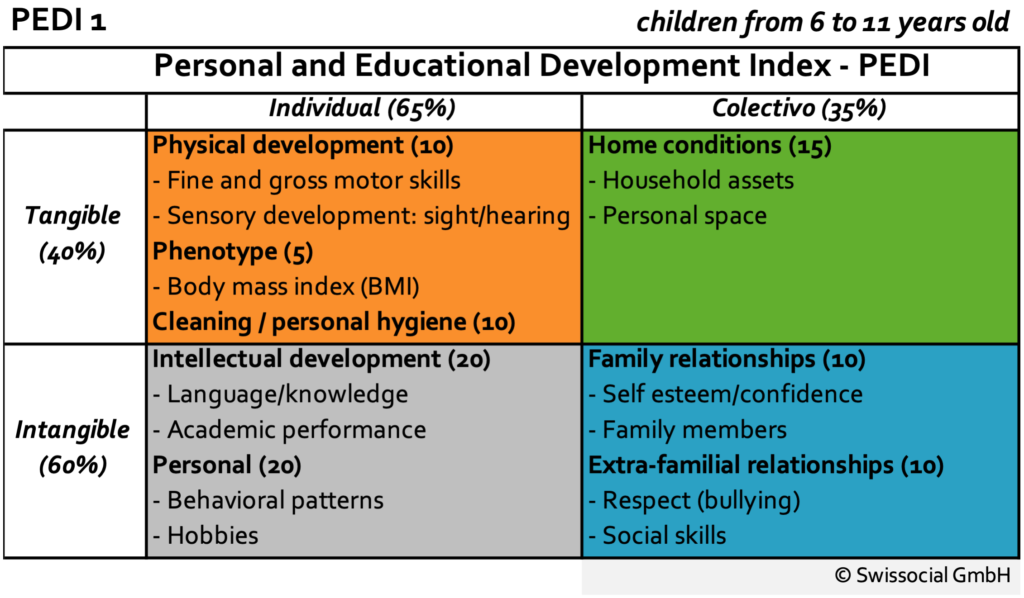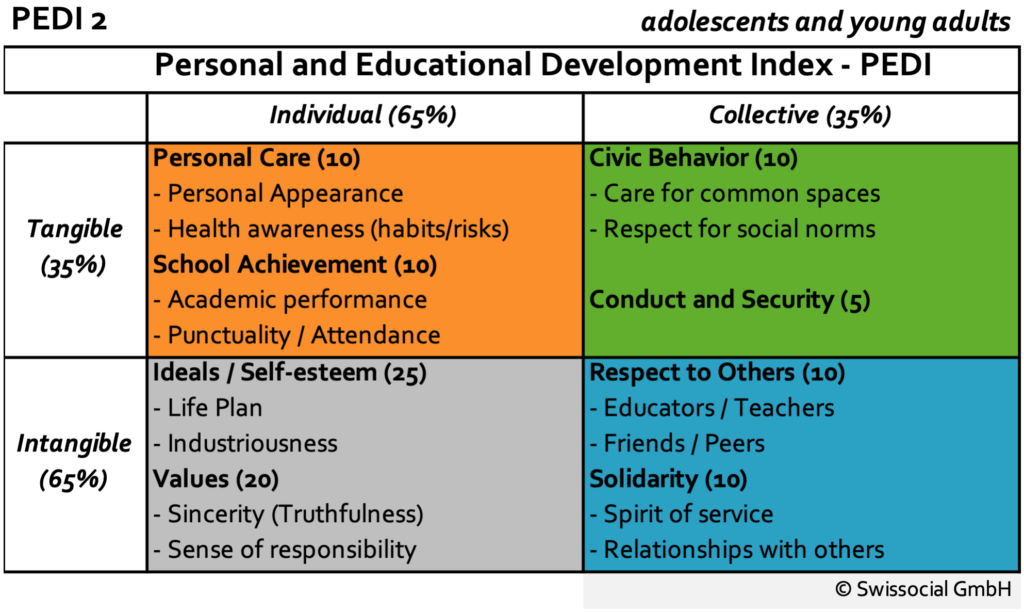Swissocial methodology for children, adolescents and young adults:
The Personal and Educational Development Index (PEDI)
For children, adolescents and young adults, Swissocial has developed and copyrighted the Personal and Educational Development Index (PEDI) methodology.
Based on age ranges, Swissocial has chosen a set of indicators covering the four elements of the Swissocial’s matrix. These have been adapted to the diverse circumstances of children, adolescents and young adults respectively. The age ranges to which each index applies may vary from country to country and culture to culture.
PEDI #1
Personal and Educational Development Index for children
Exclusive use for children from 6 to 11 years
This index uses eight indicators and 14 sub-indicators, according to the following scheme:

PEDI #2
Personal and Educational Development Index for youth
Exclusive use for adolescents and young people
For both adolescents and young adults, eight indicators and 15 sub-indicators are used, according to the following scheme:

